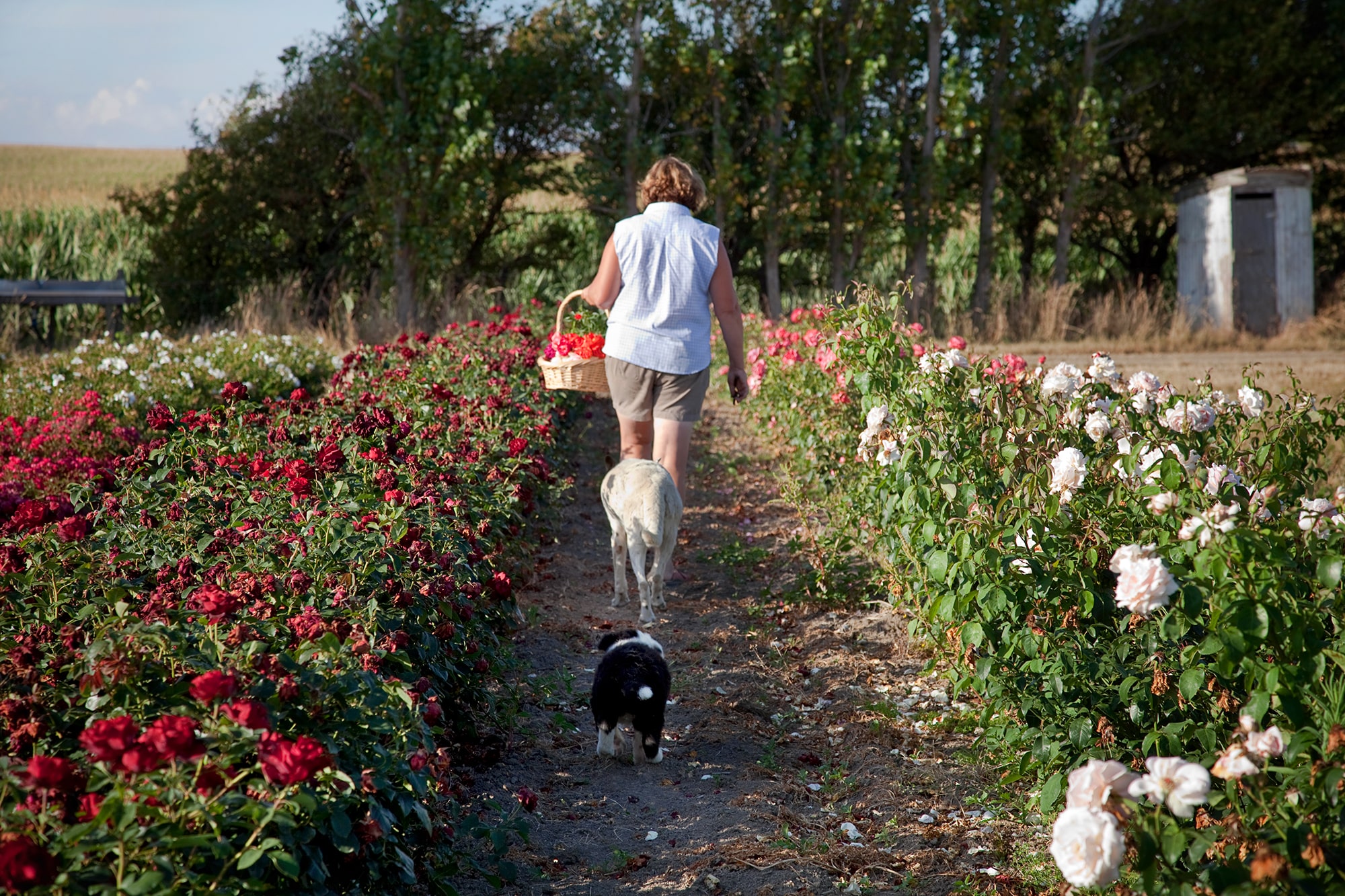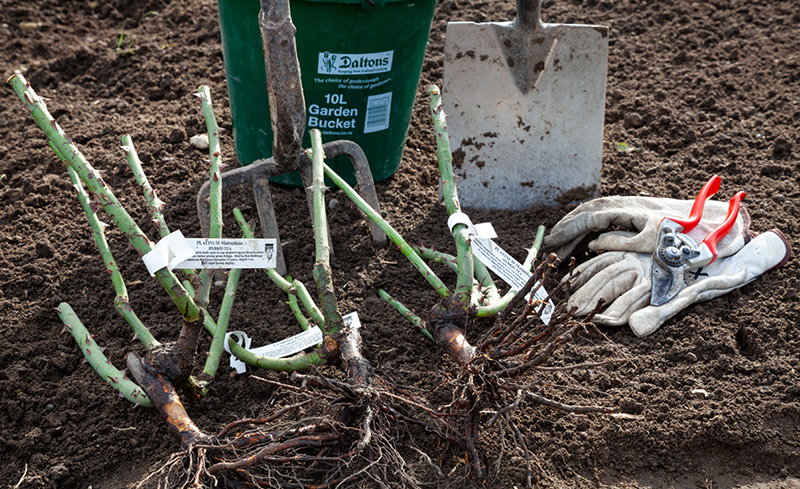
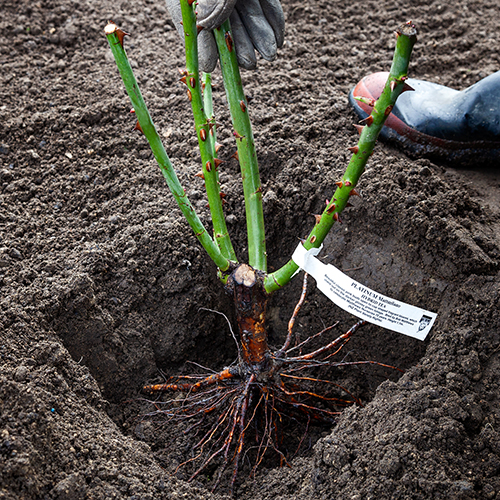
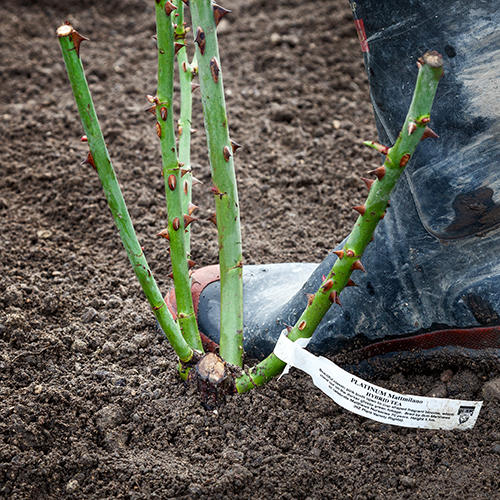
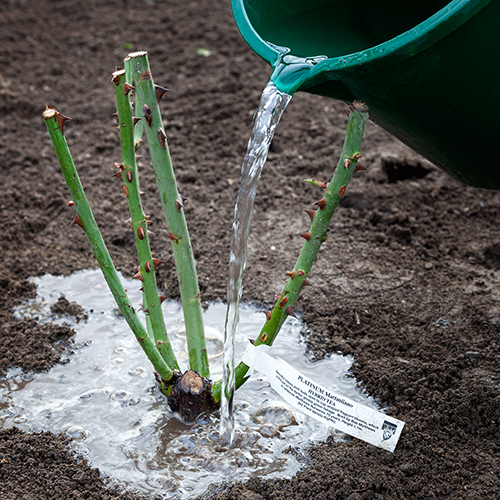
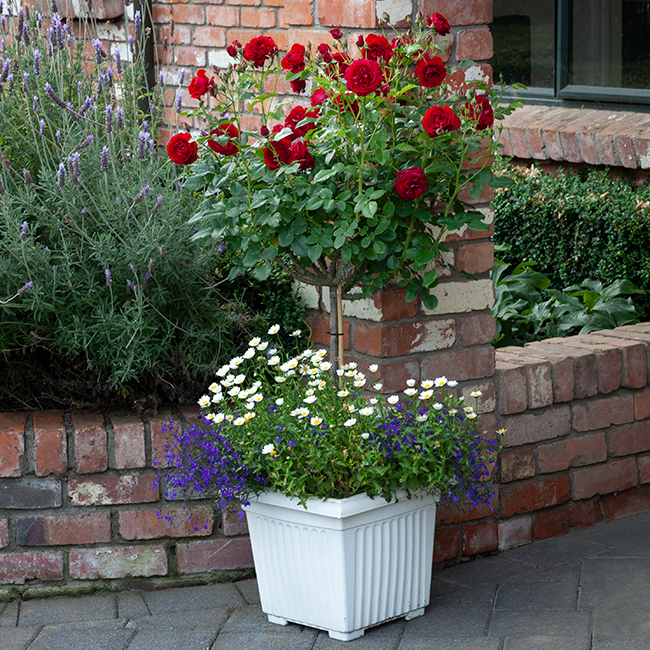
Roses will live without pruning but as they are deciduous they respond well to a good prune in winter. Doing this will give you lovely new shoots to replace the old ones, keeping the plant young with more flowers per season resulting in shapely bushy plants. Don't be scared to give it a go! In New Zealand you can prune over the winter months of June, July and August.
Having a good set of tools makes a difference, we recommend a quality pair of leather gloves and a sharp clean pair of secateurs (our team use Felco secateurs which are available for purchase from us). Loppers, hedge shears, wire brush and pruning saw are also handy. Use and old sheet or tarpaulin to collect up your prunings easily.
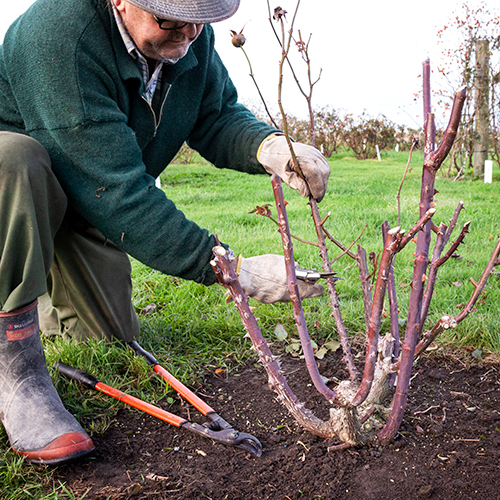
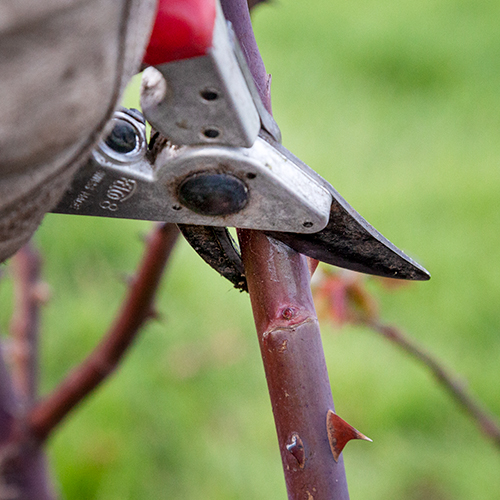
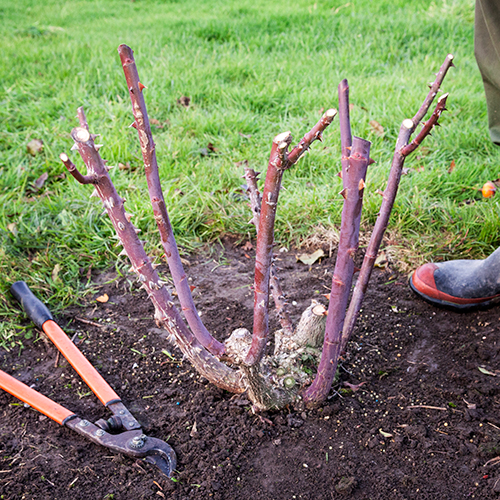
Start by removing any dead wood and spindly/small branches. Remove older stems if a newer shoot has grown from the crown. With established rose plants pruning will help to encourage new growth.
Then prune the main branches by at least a third or up to half back in length. It's best to cut just above a bud (pictured). If you want to take extra care you can angle the cut away from bud. Keep the base of the rose clear of debris, bark, soil and scaly growth. On older plants you can gently use a wire brush to remove any moss around the base of the plant. Ensure to clean up all leaves and prunings then you're done!
For Standard roses the same principles and steps apply as above. For climbing roses ensure to leave long leading canes as you wish. These can be trained in a traditional fan shape against a wall, or thinned and shaped for a rambling look over an archway. For more pruning advice don't hesitate to get in touch with us, our view our step by step VIDEO GUIDE TO PRUNING here
With newly planted roses it's best to fertilise at planting time to help give them a kick start in their new home. Once established, garden roses can be fed seasonally to assist with healthy growth. You can use any type of granule or liquid fertiliser which is recommend for roses. It's also beneficial to apply a handful of Lime fertiliser once a year in Winter around the soil of each plant. In Spring you can sprinkle a dessertspoon full of Epsom Salts (Magnesium Sulphate) around the base of each rose plant for an extra energy boost. By keeping your roses well fed they are less likely to get run down and pick up diseases and pests.
A healthy soil helps to grow healthy plants. Good mulching will also assist to conserve water as well and keeping weeds at bay. We recommend using pea straw like 'Ma's Mulch' If you use a bark mix as mulch you need to apply fertiliser twice seasonally as bark can deplete the nitrogen level of the soil affecting the overall performance your roses. We don't recommend using stones or pebbles as a ground cover.
During the flowering season as blooms become spent, you can remove the flower head stem by about 10-15cm. This will help encourage quicker replacement of flowers. It also helps to keep your roses looking their best. The keen gardener dead-heads rigorously, but an occasional stroll around the roses can be just as invigorating until the end of February. If you have a special event happening in your garden you can trim your roses back to time them to bloom for the ocassion (generally 7 - 8 weeks before the event) get in touch with Cath Matthews for timing advice! Allow your rose plants to set their hips in Autumn - they are great for picking or making rose hip tea, a fantastic source of Vitamin C.
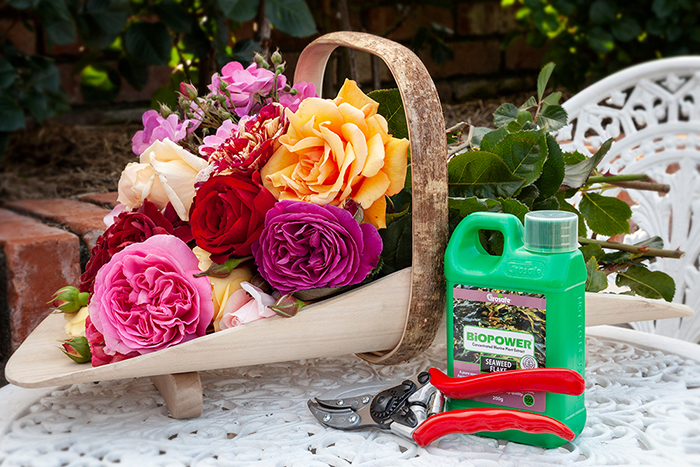
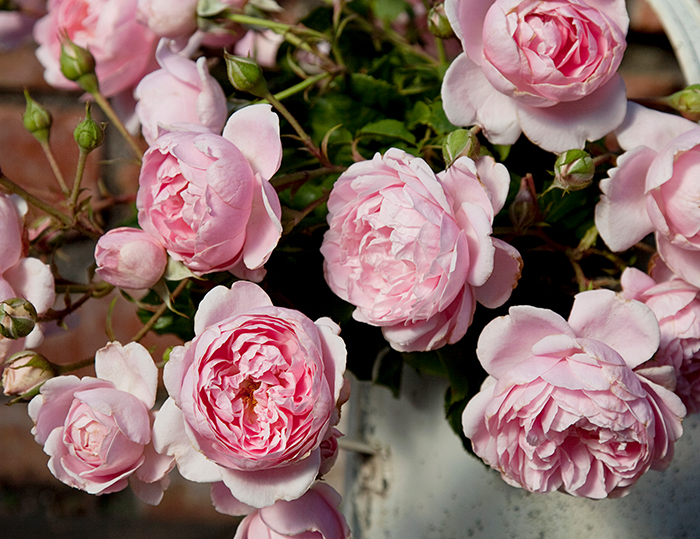
Many new rose varieties have been trialed for disease resistance so do not require spraying, however some older favourites may need spraying to help them look their best. There is a wide range of products available but for basic care we suggest to spray seasonally with organic treatments like Copper Oxichloride (especially after pruning in winter). Lime Sulphur can also be applied in Winter. Most common ailments like aphids, blackspot and rust can be easily treated with organic options like the Grosafe range available to purchase from us here and from Garden Centres nationwide.
To assist roses against bugs there are many companion plants that can also be utilised such as Pansy, Pyrethrum, Chamomile, Garlic, Alyssum, Catmint, Freesia, Dwarf Bearded Iris, Violet to name a few.
In summer you can deep water established garden roses at the base of the plant every 2-3 weeks if the roses are situated in a dry area. Avoid overhead watering on leaves and branches - it's best to water around the soil at the base of the plant.
Roses have been gracing our gardens and beautifying our homes for centuries. A symbol for love, compassion, peace and beauty - there are many ways to be inspired and get creative so you can enjoy roses not just in the garden but within your home, or to give as a gorgeous gift for others.
~ Cut Flowers ~ Roses are the queen of cut flowers, perfect for picking to bring colour and fragrance inside or to give a bunch or bouquet to a loved one. It's best to pick blooms in the early morning or late evening (when sap flow is lower). Remove lower leaves and thorns then give them a good long drink in a bucket of water. Re-cut the stems on a slight angle before arranging - this helps to keep them fresher for longer! Top up with fresh water as needed. Cath loves to use super handy Cut & Hold Secateurs from Felco for picking - they hold the base of the stem in the secateurs - so you can pick one handed! These make the perfect gift for the gardener that seems to have everything, we highly recommend them if you're a flower farmer.
~ Dried Roses ~ For an everlasting arrangement, wreath or as a way to preserve that special bouquet, dried roses are amazing. Hang upside down in a warm place out of direct sunlight until dry then arrange as you wish. You can also use dried buds and individual petals for special baking creations. Make your own pot-pourri with dried rose petals and a mixture of your favourite powdered spices and essential oils (our favourite mix includes cinnamon and vanilla) Try freezing petals in ice cubes for popping in a special summer cocktail or crystalise petals with sugar for decorating cupcakes.
~ Heavenly Hips ~ Rose Hips are a true Autumn delight. Some varieties will give the most amazing display to enjoy in the garden or to pick as bunches for an Autumn inspired arrangement. You can also eat them! Naturally rich in Vitamin C you can blend hips to make your own rose hip syrup, infused oil, tea, jelly or body balm. The best hips for this include any of the Old Fashioned Rugosa's.
For more rose inspiration and advice get in touch with us, we'd love to help you realise your rose garden dreams. With over 75 years experience we've seen and heard it all! Find our details on the Contact page.
